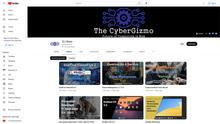香港月曆
| 日 | 一 | 二 | 三 | 四 | 五 | 六 |
|---|---|---|---|---|---|---|
| 1 | 2 | 3 | 4 | 5 | 6 | |
| 7 | 8 | 9 | 10 | 11 | 12 | 13 |
| 14 | 15 | 16 | 17 | 18 | 19 | 20 |
| 21 | 22 | 23 | 24 | 25 | 26 | 27 |
| 28 | 29 | 30 | 31 |
標籤
- 中電 (7)
- 乘客 (7)
- 人民力量 (7)
- 保安局 (7)
- 元朗 (20)
- 入境處 (8)
- 公務員 (11)
- 公屋 (18)
- 公民黨 (8)
- 公立醫院 (7)
- 劏房 (7)
- 勞工處 (10)
- 區議員 (9)
- 區議會 (8)
- 南韓 (8)
- 員工 (8)
- 啟晴邨 (7)
- 國安法 (9)
- 大埔 (9)
- 天文台 (14)
- 學校 (7)
- 學生 (13)
- 家長 (12)
- 將軍澳 (7)
- 尖沙咀 (12)
- 屯門 (22)
- 巴士 (12)
- 幼稚園 (9)
- 康文署 (8)
- 廉政公署 (12)
- 張建宗 (8)
- 律政司 (11)
- 房屋署 (11)
- 投訴 (11)
- 政府總部 (8)
- 教師 (9)
- 教育局 (12)
- 旅客 (21)
- 日本 (8)
- 旺角 (17)
- 東區裁判法院 (8)
- 林鄭月娥 (9)
- 校長 (7)
- 梁振英 (29)
- 機場 (10)
- 民主派 (12)
- 民主黨 (10)
- 沙田 (9)
- 泛民 (8)
- 泰國 (7)
- 海關 (20)
- 消委會 (9)
- 消防處 (7)
- 深水埗 (14)
- 港珠澳大橋 (7)
- 港鐵 (22)
- 澳門 (8)
- 疫情 (7)
- 疫苗 (9)
- 的士 (11)
- 社民連 (8)
- 立法會 (62)
- 立法會議員 (7)
- 維園 (7)
- 美國 (10)
- 荃灣 (9)
- 蘇錦樑 (9)
- 蘋果日報 (7)
- 衞生署 (14)
- 衞生防護中心 (11)
- 西九龍裁判法院 (10)
- 記者 (8)
- 詐騙 (7)
- 警員 (13)
- 警方 (15)
- 財委會 (7)
- 遊行 (15)
- 運輸及物流局 (9)
- 運輸署 (10)
- 酒店 (7)
- 醫生 (11)
- 醫管局 (15)
- 金鐘 (8)
- 銅鑼灣 (10)
- 長者 (7)
- 陳茂波 (9)
- 食環署 (7)
- 香港 (7)
- 香港電台 (8)
- 高永文 (9)
- 高等法院 (7)
- 黎智英 (7)
Archives
選擇月份Disaggregated Routing with SONiC and VPP: Lab Demo and Performance Insights – Part Two
In Part One of this series, we examined how the SONiC control plane and the VPP data plane form a cohesive, software-defined routing stack through the Switch Abstraction Interface. We outlined how SONiC’s Redis-based orchestration and VPP’s user-space packet engine come together to create a high-performance, open router architecture. In this second part, we’ll turn […]
The post Disaggregated Routing with SONiC and VPP: Lab Demo and Performance Insights – Part Two appeared first on Linux.com.
Disaggregated Routing with SONiC and VPP: Architecture and Integration – Part One
The networking industry is undergoing a fundamental architectural transformation, driven by the relentless demands of cloud-scale data centers and the rise of software-defined infrastructure. At the heart of this evolution is the principle of disaggregation: the systematic unbundling of components that were once tightly integrated within proprietary, monolithic systems. This movement began with the separation […]
The post Disaggregated Routing with SONiC and VPP: Architecture and Integration – Part One appeared first on Linux.com.
Kubernetes on Bare Metal for Maximum Performance
When teams consider deploying Kubernetes, one of the first questions that arises is: where should it run? The default answer is often the public cloud, thanks to its flexibility and ease of use. However, a growing number of organizations are revisiting the advantages of running Kubernetes directly on bare metal servers. For workloads that demand […]
The post Kubernetes on Bare Metal for Maximum Performance appeared first on Linux.com.
How to Deploy Lightweight Language Models on Embedded Linux with LiteLLM
This article was contributed by Vedrana Vidulin, Head of Responsible AI Unit at Intellias (LinkedIn). As AI becomes central to smart devices, embedded systems, and edge computing, the ability to run language models locally — without relying on the cloud — is essential. Whether it’s for reducing latency, improving data privacy, or enabling offline functionality, local AI […]
The post How to Deploy Lightweight Language Models on Embedded Linux with LiteLLM appeared first on Linux.com.
Automating Compliance Management with UTMStack’s Open Source SIEM & XDR
Achieving and maintaining compliance with regulatory frameworks can be challenging for many organizations. Managing security controls manually often leads to excessive use of time and resources, leaving less available for strategic initiatives and business growth. Standards such as CMMC, HIPAA, PCI DSS, SOC2 and GDPR demand ongoing monitoring, detailed documentation, and rigorous evidence collection. Solutions […]
The post Automating Compliance Management with UTMStack’s Open Source SIEM & XDR appeared first on Linux.com.











 Jacky
Jacky